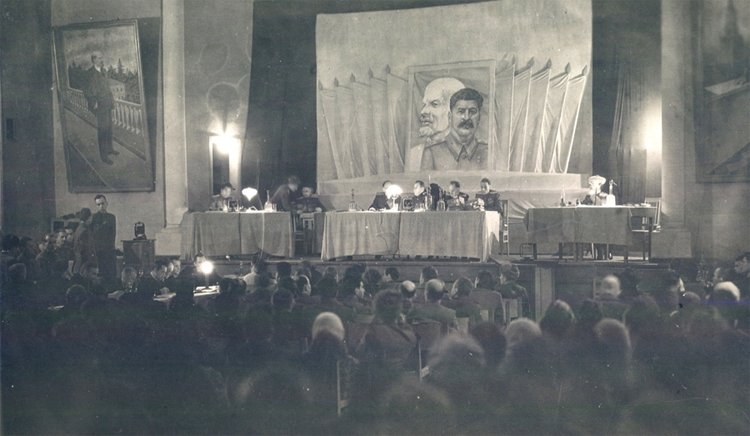Photo Captions
Staging Justice. Trial Photography

The image shows a Soviet military trial that took place from 17 to 25 November 1947 in Chernihiv, a small city in northeastern Soviet Ukraine. The defendants, thirteen Hungarian and three German nationals, former members of the German-led Axis military forces that occupied parts of the Soviet Union during the Second World War, were accused of having committed wartime atrocities.
This was a Soviet war crimes trial. Usually, military trials were conducted in secret, but in select cases, the Soviet authorities opened them to the public. At the public military trials, the regime took great care to project an image of the rule of law. Thirty witnesses were heard at the Chernihiv trial; each defendant had been assigned a lawyer. Still, at its core, the trial remained an example of illiberal justice: neither the judges nor the lawyers were independent. The Soviet government in Moscow closely monitored and controlled the proceedings. Not seldom, verdicts had been prepared in advance.
Soviet war crimes trials were what one could call show trials with actual acts. To be sure, every trial, whether in liberal or illiberal legal systems, can contain theatrical elements. Perhaps no other trials, however, represented the genre of the legal spectacle as much as the three 1936–38 Moscow trials of alleged political enemies. The Soviet postwar trials of Axis soldiers shared many of their characteristics. Like the prewar trials, they were examples of staged justice in a double sense – not just because their outcome was predetermined, but also because they usually took place in an actual theatre. This choice probably arose from practical considerations: theatres were usually the only buildings large enough to accommodate hundreds of people at a time. Still, the image of judiciary and prosecution seated on an actual stage, as shown in the photograph, must have conveyed a powerful message to contemporaries. To the image as a historical source, on the other hand, it adds a note of irony.
Franziska Exeler
